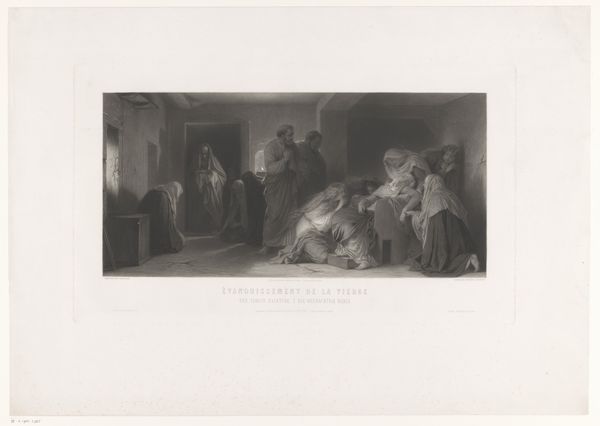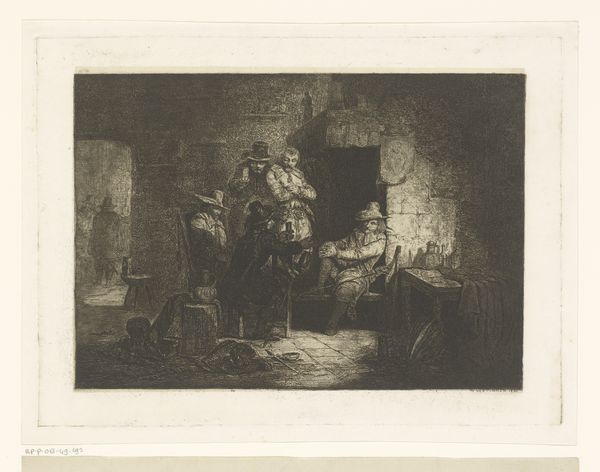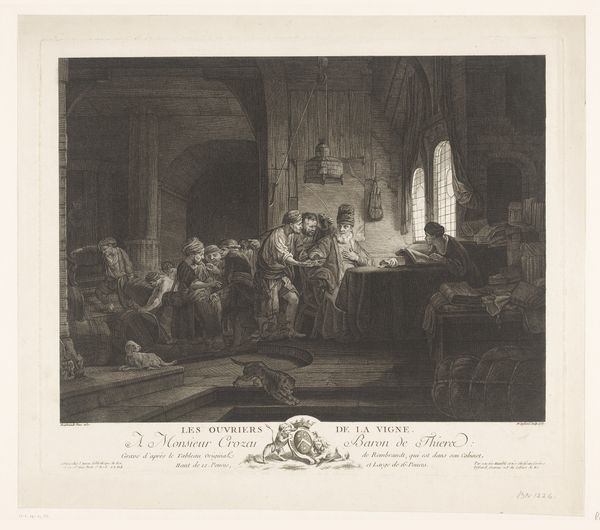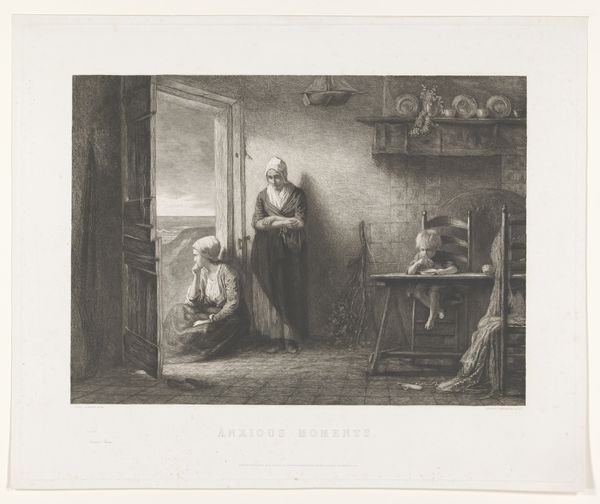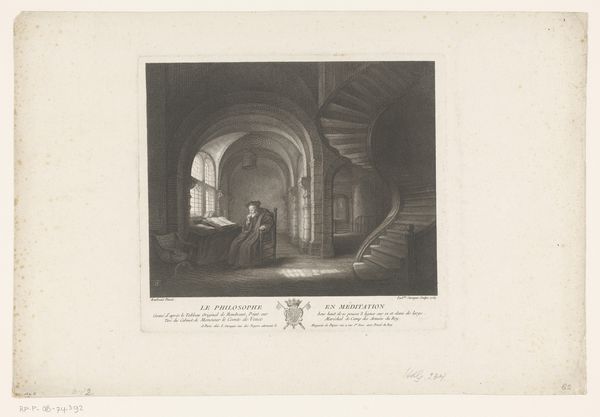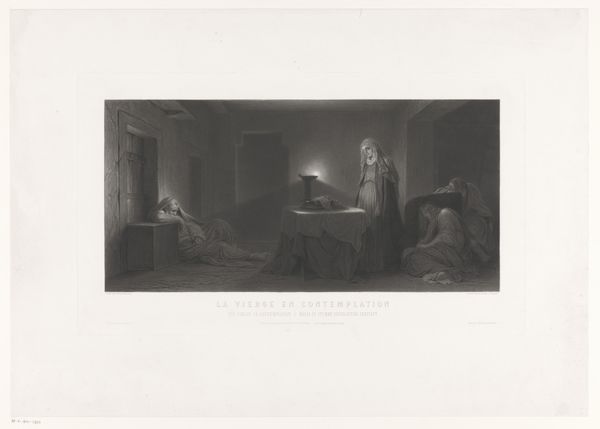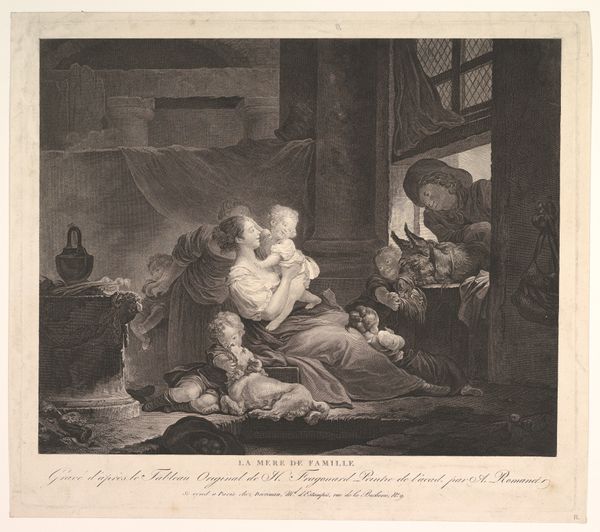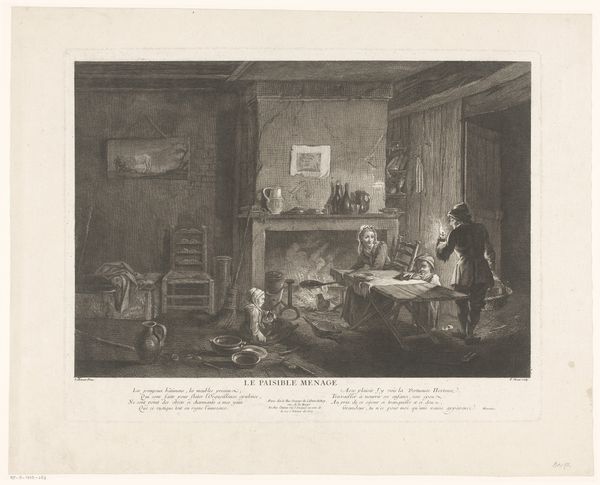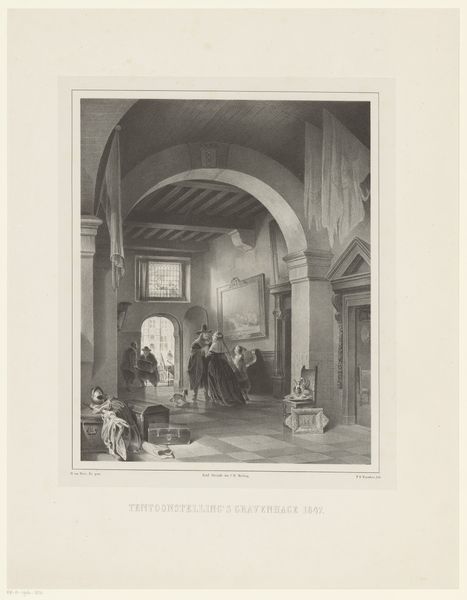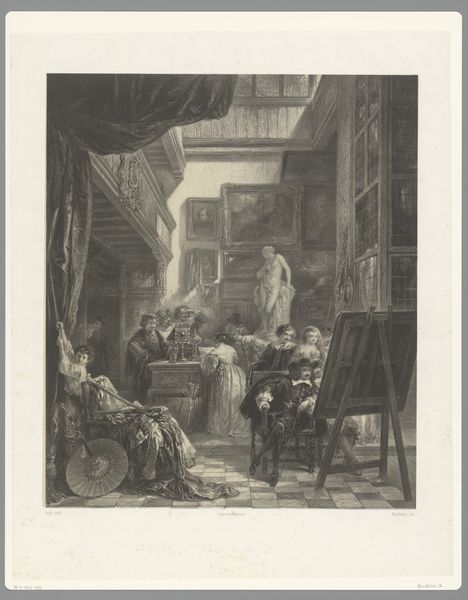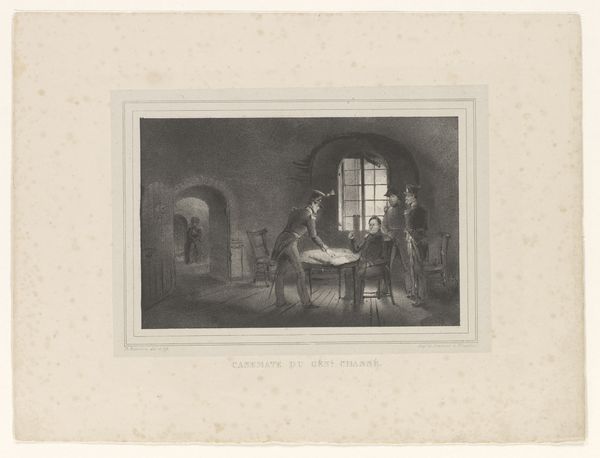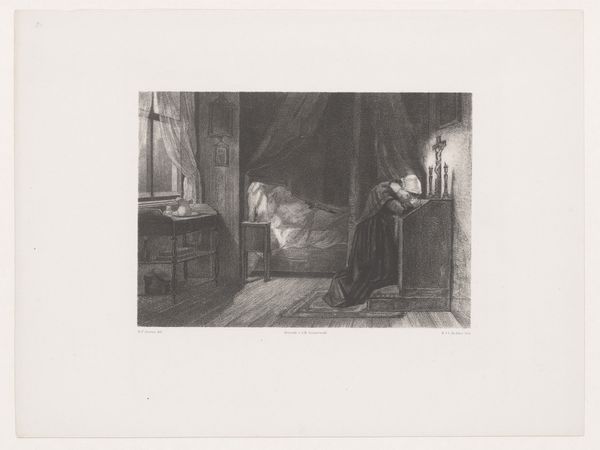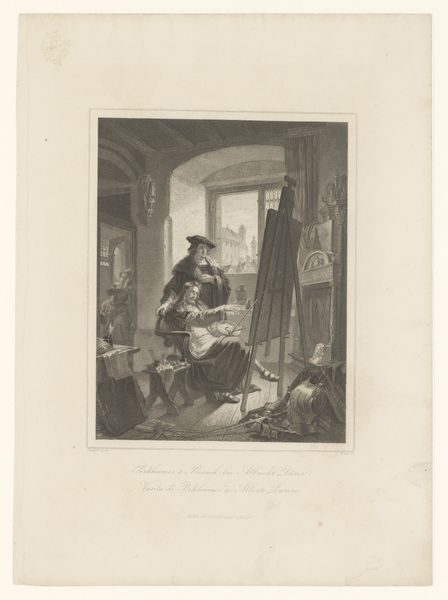
print, engraving
#
print photography
#
baroque
# print
#
figuration
#
line
#
genre-painting
#
history-painting
#
engraving
Dimensions: height 341 mm, width 468 mm
Copyright: Rijks Museum: Open Domain
Curator: This is "Holy Family at Night," an engraving by James McArdell from around 1745 to 1765, currently held at the Rijksmuseum. Editor: My first impression is the mood. The darkness feels enveloping, yet there’s a gentle light focused on the figures – almost stage-like. Curator: It's fascinating how McArdell, working with engraving, captures that luminosity. He’s working in the baroque tradition, after all, known for its dramatic use of light and shadow. Think of the tools and labor required to carve these lines to evoke texture and tone—the physicality is something else. Editor: Absolutely, and beyond just technical skill, the focused lighting directs our gaze right to the Madonna and child. It’s not just about the technicality; it invites reflections on the idealization of motherhood in 18th-century Europe, framed by the constraints of religious and societal expectations. Curator: I agree. Consider, though, the socio-economic aspects of printmaking during this period. These engravings made religious imagery available to a wider audience. This was a commodity, reflecting the intersection of art, religion, and early capitalism. Editor: That's an interesting point. Yet, while the distribution may have democratized the image to some extent, did the representation challenge the social hierarchy, or merely reinforce dominant power structures by presenting the "ideal" family? Curator: The print medium itself contributes meaning, disrupting conventional notions of painting or sculpture as more precious or elevated forms of artistic output. McArdell blurs the lines. Editor: I find it important to also consider who "the Holy Family" excluded from their paradigm, those whose gender, race, and class put them in opposition to such concepts, for example, or even beyond its boundaries. Curator: A final thought: looking at this, I find it extraordinary how McArdell translated the depth and subtleties of painting into the graphic language of engraving. The material transformation speaks volumes. Editor: I concur; examining how artworks propagate values gives insight into how social norms, often disguised as cultural products, seeped into the broader social fabric.
Comments
No comments
Be the first to comment and join the conversation on the ultimate creative platform.
